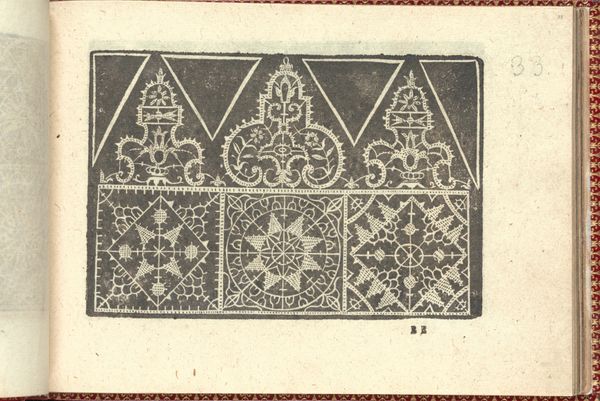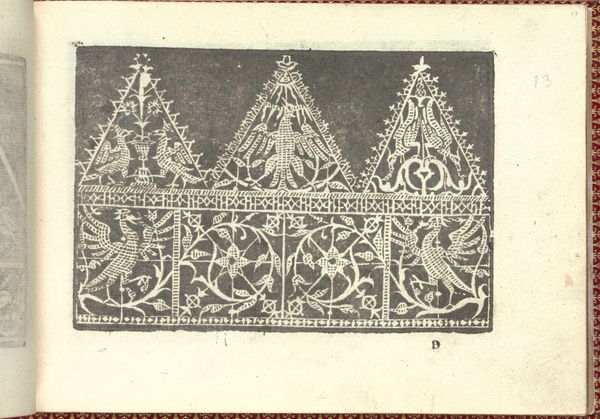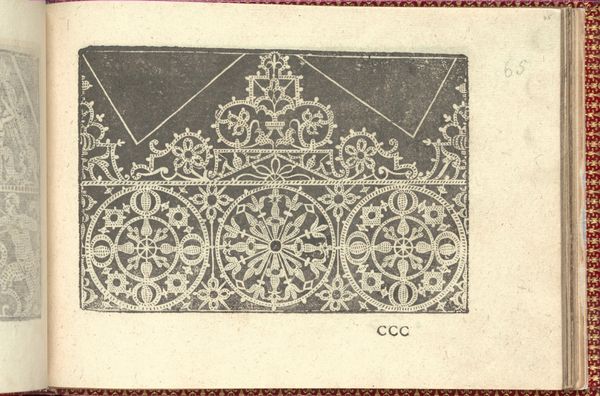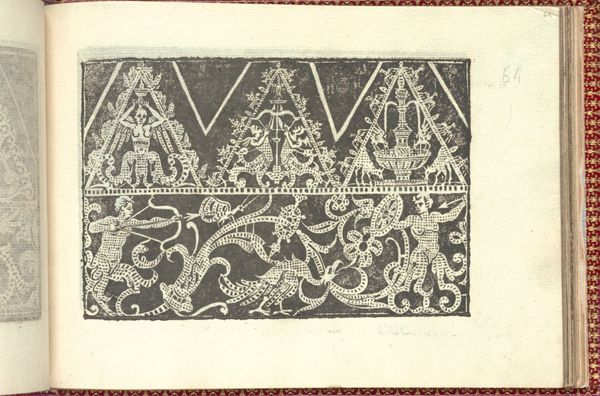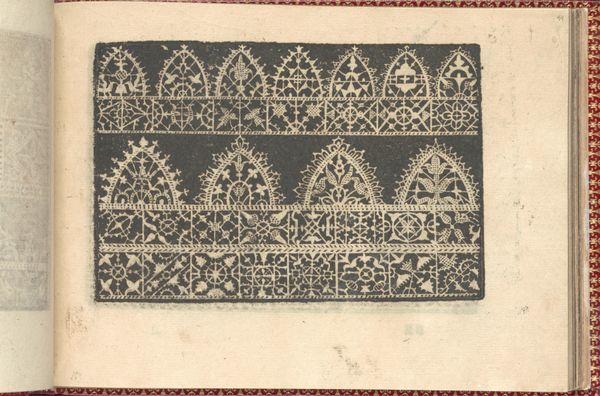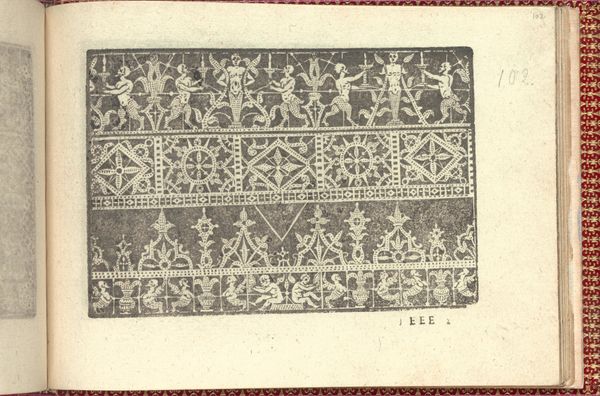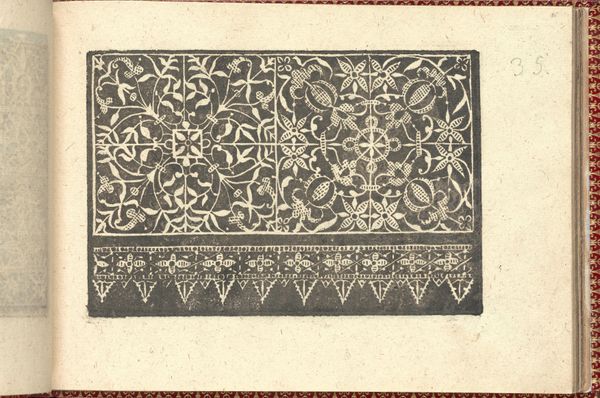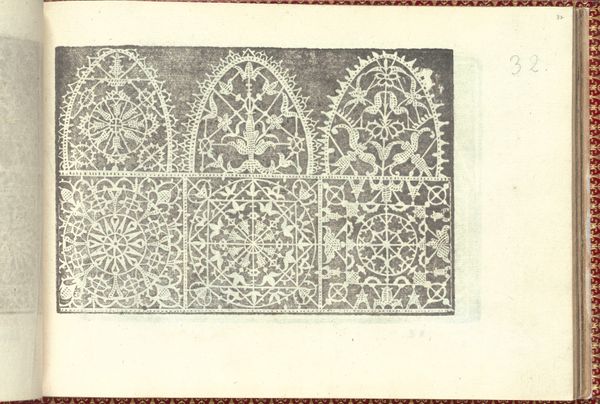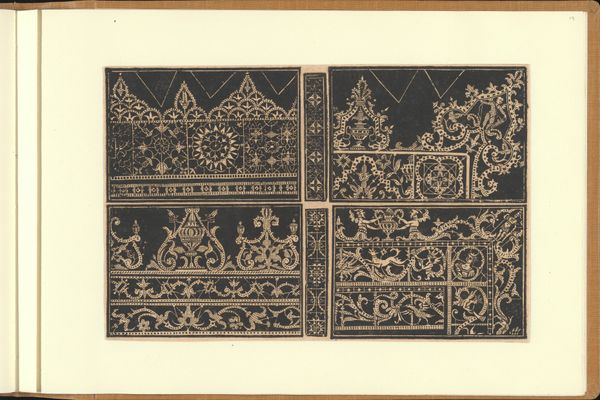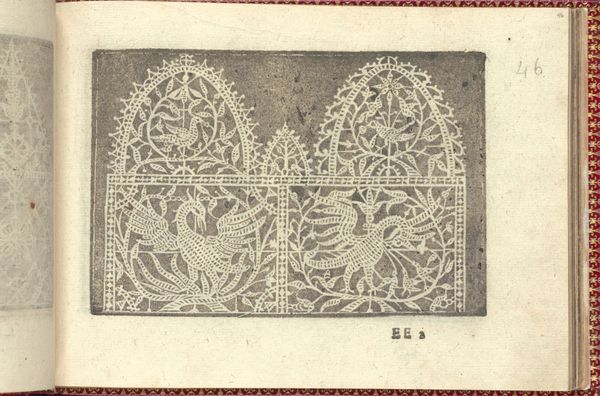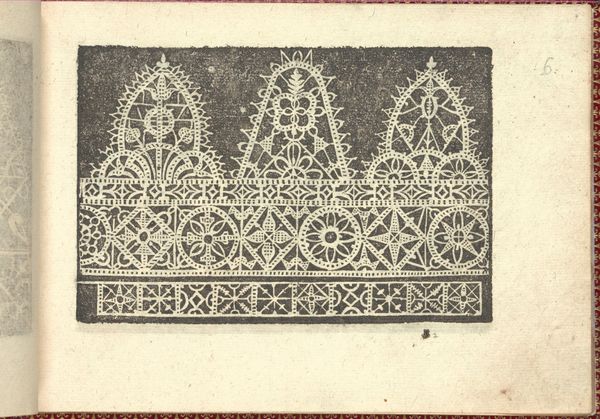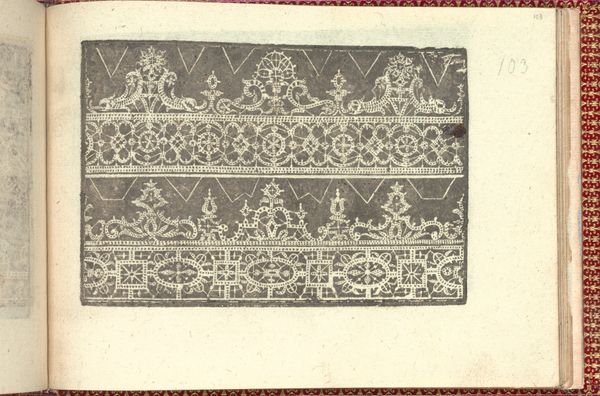
Corona delle Nobili et Virtuose Donne: Libro I-IV, page 41 (recto) 1601
0:00
0:00
drawing, graphic-art, print, intaglio, textile, engraving
#
drawing
#
graphic-art
# print
#
intaglio
#
textile
#
geometric
#
line
#
decorative-art
#
engraving
Dimensions: Overall: 5 1/2 x 7 11/16 in. (14 x 19.5 cm)
Copyright: Public Domain
Curator: This is page 41 from Cesare Vecellio’s "Corona delle Nobili et Virtuose Donne: Libro I-IV," published in 1601. It’s an intaglio print, a type of engraving meant to showcase textile patterns. Editor: The immediate impression is a striking duality. A harsh geometry, almost architectural, married to delicate, almost floral embellishments. It feels both imposing and incredibly intricate. Curator: The use of geometric forms – triangles topping a row of squares – is certainly deliberate. One might interpret the triangle as an aspirational form, a reaching towards higher planes. The square grounds these aspirations. Editor: I see more than mere geometry; I see tools, technologies. Consider the labor involved: the meticulous cutting, the inking, the pressure required for a clear impression. This wasn’t just aesthetic design; it was also skilled craft work. It speaks of workshops and collaborative effort. Curator: Of course, the engraving acts as a record of these techniques but note the semiotic interplay here. The line work, particularly within the squares, attempts to simulate lace, its fineness acting as an early sort of trademark for skill. These lines also operate structurally by producing varied figures against their ground. Editor: What also grabs me is the black and white contrast; stark yet informational. Engravings like these allowed for wider distribution of designs. So the material impact goes far beyond the aesthetic: these prints democratized fashion, letting more women emulate elite styles, though with what substitute material? What other labors, exploitative or creative, did it engender? Curator: An interesting consideration of the socioeconomic impact. One could also argue about the purely aesthetic legacy of such a pattern-based medium, and its impact on a modern aesthetic, far beyond textile production of the period. Editor: Perhaps. Yet, considering the raw materials and labor processes adds layers. The material is both the subject and object of analysis; that we examine not just what is represented, but also how and with what consequences. Curator: Ultimately, Vecellio gives us a striking document of textile designs translated through intaglio print; simultaneously utilitarian and visually compelling, an interesting node between applied and “fine” art. Editor: Precisely. A fascinating glimpse into the cross-section of labor, technology, and aspirational aesthetics of the era.
Comments
No comments
Be the first to comment and join the conversation on the ultimate creative platform.
